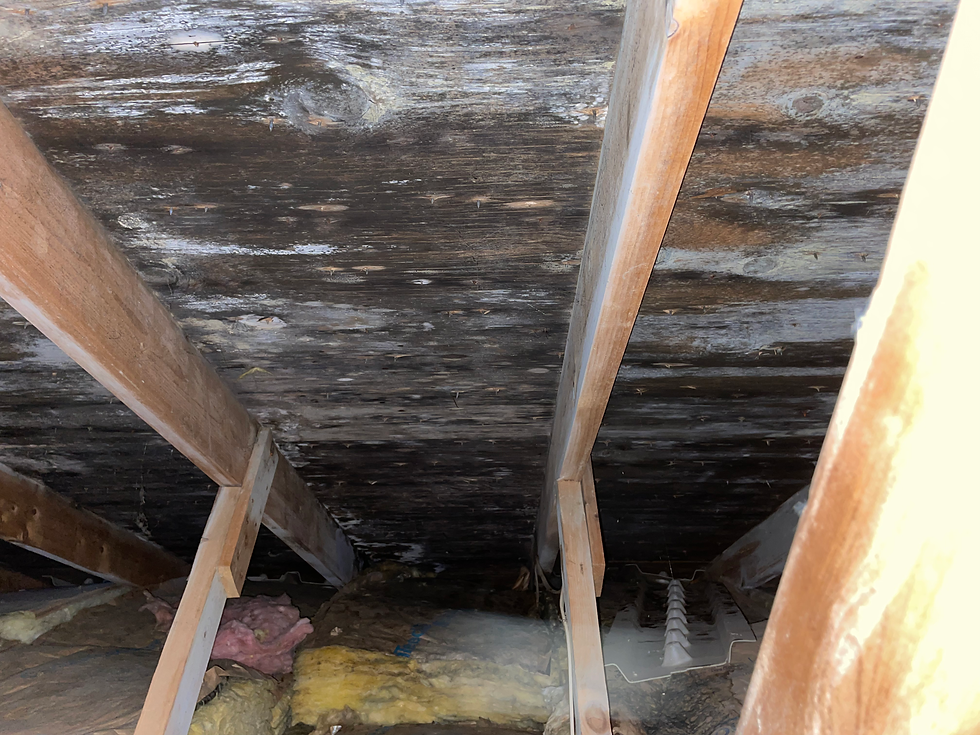Improper Bathroom Venting
- Square One Inspections

- Jan 17, 2022
- 2 min read
This is one of the most common findings that seems to particularly impact homes from the 1960s-1990s.
Before 1994, it was proper code to have a bathroom fan vent into the attic space. Not only was this allowed, it was encouraged by code enforcement officials. As time progressed and homes became more energy efficient through improved windows and doors and draft reductions, greater concentrations of heat and moisture in the attic eventually lead to mold.
Mold is a very basic organism and only needs four things to grow:
Mold Spores - everywhere around us and invited inside each time we open a door
Food Source - wood, paper, fabric...really anything porous.
Heat - finding its way up as heat rises. Poor insulation and open/drafty attic hatches allowed free access
Moisture - heat from the living areas, specifically through open/drafty attic hatches and recessed lighting, held moisture to accumulate in tight spaces
With bathroom vents heading directly to the attic, the last two (heat and moisture) are sent directly into an unvented or inadequately vented attic space.
Visit www.squareonemaine.com for more information.
After 1994, this happened less often, but it still happens. See some examples, below:
Disconnected vent pipe from a 2000s home: Notice the mold due to the disconnection

Incomplete Installation: The installer considered it, but never finished it

Regardless of the age of your home, you should inspect the inside of the roof decking with your own eyes. If it looks like the next photo, you need a mold mitigation specialist. You don't need to test it. Dark staining is not something you want and is most likely mold. It should be removed. Even if you don't think so, the potential buyer of your home will think so. Not selling your house? You will someday. Nip it in the bud.

Matt and Matt
www.squareonemaine.com





Comments